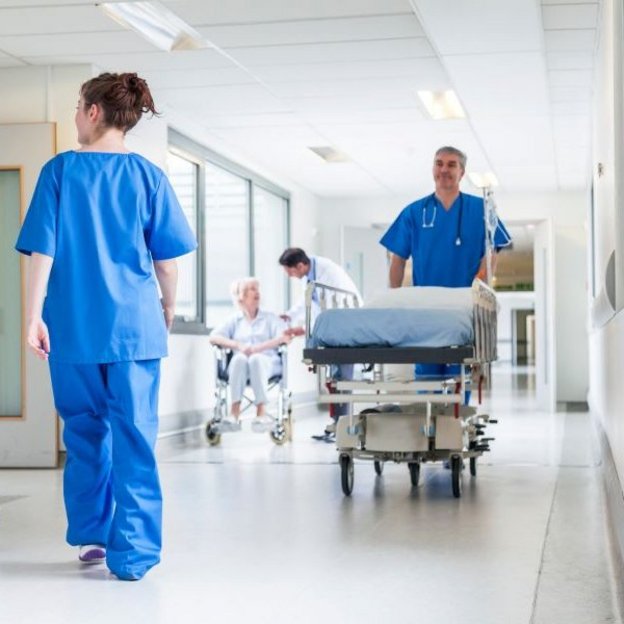Lüftungsanlagen für Krankenhäuser: TÜV NORD bietet Vorab-Check mit Remote Inspection an
Mehr Nachhaltigkeit durch Check der Großgeräte vor dem internationalen Transport

Mehr Nachhaltigkeit durch Check der Großgeräte vor dem internationalen Transport

Essen: There are good reasons why strict hygiene regulations apply in hospitals, which also have an impact on building technology. Ventilation and air conditioning systems, which ventilate and extract air from rooms, filter air and recover heat, are of particular importance. If they do not work properly in terms of hygiene due to their design, the air is not improved but deteriorated. ‘This is why manufacturers rely on voluntary product testing and certification to ensure the hygiene compliance of their appliances and to document this with a test mark from an independent organisation,’ says Timo Reisner from TÜV NORD. With the new preliminary check, the company is now making a contribution to greater sustainability by reducing costly ship transport and thus avoiding emissions.
A so-called basic hygiene test is not mandatory for HVAC systems, but is recommended for manufacturers who can provide proof of the quality of their products in this way, says Reisner. During such a basic test, a prototype is inspected, which must be representative of the series product in terms of the material and components used. The appliance series is certified on the basis of the prototype after passing the test. Timo Reisner: ‘With our hygiene tests, we help to ensure that ventilation systems in hospitals are designed to be safe and hygienic.’ For the tests in the TÜV NORD laboratory for refrigeration, air conditioning and ventilation technology, it is irrelevant whether it is a centralised unit, i.e. a unit that ventilates entire buildings, or whether it is a decentralised unit that only ventilates parts of the building or individual rooms.
Defective appliances must be returned and repaired
‘Sometimes glaring defects come to light during the basic inspection,’ explains Reisner. ‘Sometimes we discover large leaks in housings or filter installations. Time and again, components are installed that are not approved for use in hospitals or we find that certain components are inaccessible and therefore almost impossible to clean.’
If the device cannot be certified due to such fundamental defects, a great deal of logistical effort has been wasted: the large, bulky devices have to be dismantled in the laboratory and sent back, the necessary rework is carried out including any design changes at the factory - and the device is transported back to the laboratory. This is inevitably expensive and time-consuming, especially for overseas manufacturers. Added to this are high emissions for transport around the world.
Lower costs and emissions by avoiding transport
This is why TÜV NORD now offers pre-checks: ‘In this way, we help manufacturers to avoid the most serious errors before the appliance has to travel for weeks and be laboriously assembled and disassembled,’ explains Timo Reisner. The pre-check includes a review of the technical documentation. ‘We also offer a remote inspection of the finished and ready-to-ship device, i.e. a visual inspection that our experts in Germany carry out with customers at their production sites worldwide via a secure video connection,’ says Reisner.
The regular surveillance audits for certified products, which take place every three years, can also be carried out remotely in some cases. In particular, the quality management system is tested to ensure that manufactured devices meet the same quality standard as the sample device from the basic test. ‘A new laboratory test is only required if the design of the device has been changed; this is the case if the changes have an impact on the mechanical properties of the device or if additional components are to be added to the certification.’
-- INFOBOX STANDARDS -
Ventilation and air conditioning systems are subject to standardised requirements. VDI 6022-1 is relevant for office buildings. This standard deals with hygiene requirements for occupied rooms, for example offices. DIN 1946-4 specifies requirements for air conditioning systems in hospitals, for which special hygiene regulations apply. The basic test consists of three parts. A mechanical test is carried out on the basis of EN 1886. It contains test specifications for housing or filter bypass leakage. Compliance with VDI 6022-1 and/or DIN 1946-4 is ensured by a visual inspection of all components and a document check. The basis for this is DIN EN ISO 846, which essentially deals with the suitability of the materials used. Further information on the testing laboratory for refrigeration, air conditioning and ventilation technology can be found here.
Founded over 150 years ago, we stand for security and trust worldwide. As a knowledge company, we have our sights firmly set on the digital future. Whether engineers, IT security experts or specialists for the mobility of the future: in more than 100 countries, we ensure that our customers become even more successful in the networked world.